3 Bin Compost System (Fully Explained!)
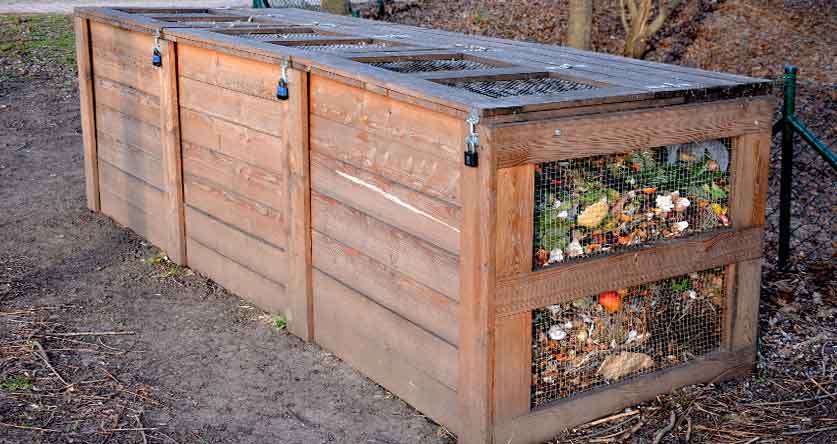
You’ve got a big garden that makes mountains of waste and needs mountains of compost to keep in tip-top condition. So, your compost bin is always overflowing – but never has the chance to finish breaking down what’s in it.
What you need is another bin. And another! Yes, a 3-bin compost system will take some of the pressure off the 1 bin you’re currently overworking and make your composting efforts more productive.
What Is A Three Bin Compost System?
A 3-bin compost system is a set of three bins for composting large volumes of garden waste quickly. The bins are arranged side by side for easy turning from one bin to the next. Each compartment contains compost in different stages of maturation.
Three-bin systems come in various designs and can be used in different ways. The most popular way to use this system is to make hot composting easier.
The 3 Bin Compost Process (How Does It Work)
The 3-bin compost method works to support hot composting in 2 ways:
- It makes turning compost more convenient.
- It makes it easier to monitor the compost’s water level.
3-Bin Compost Systems Make Turning Compost More Convenient
You need to turn your compost regularly if you want it to heat up. Turning your compost keeps air flowing, and this is essential to hot composting because it gives composting microorganisms the oxygen they need to work hard enough to make temperatures soar.
Regular turning also spreads heat throughout the compost, encouraging all organic wastes to break down at the same speed.
In a 3 bin setup you regularly and easily move the contents from one bin to another. This ensures the whole of the organic matter is well mixed and aerated by the turning process.
3-Bin Compost Systems Makes It Easier To Monitor The Compost’s Water Level
Hot composting will only happen if your compost’s moisture content is just right. The moisture level you’re aiming for is 40-60% water, which feels similar to a wrung-out sponge.
Because the contents are frequently turned and mixed, a three bin configuration allows you to add moisture evenly throughout the rotting pile. This ensures better overall moisture levels that are more tricky to achieve with a regular bin.
Why Should You Use A 3-Bin Compost System?
3-bin compost systems have several perks. On top of promoting hot composting for faster results, these systems also make it easier for you to manage big batches of garden and food waste, store compost at different stages of development, and give you a constant supply of compost.
It’s an efficient, orderly system to break down organic wastes.
Do I Need to Have 3 Compost Bins?
Not everybody needs this kind of setup. A 3-bin compost system will likely work for you if:
- You make lots of organic waste.
- You have plenty of free space in your yard (we’re talking at least 3 cubic yards.)
- You want somewhere to store compost while it matures.
- You’re looking for a place to keep dry leaves for a constant supply of brown organic waste to balance your green organic waste.
- You want to produce high volumes of compost quickly.
- You’re keen to have a more thorough, convenient, and neater way to turn your compost than mixing everything with a garden fork or shovel.
The 3 Bin Compost Design

You can buy the parts for your 3-bin compost system and assemble them at home or make your own DIY structure from scratch.
Designs for 3-bin compost systems allow for flexibility, so select your size, shape, and materials based on your preferences and budget.
The bins are usually rectangular, consisting of joined panels forming 3 identical bins. They often have a removable panel at the front (for improved airflow and easy loading and emptying) and should have lids to retain heat and keep rain and pests out.
3-bin compost systems are usually made from wooden pallets or a wood frame and hardware cloth. Stacked cinder blocks also work well.
The size of the bins matters if hot composting is your goal. Each bin should be big enough to hold 1 cubic yard (or 3 x 3 x 3 feet) of compost to generate enough heat for quick composting.
How To Use A 3 Bin Compost System
3-bin compost configurations are versatile. You can choose how to use yours according to your needs and how much effort you’re willing to put in.
The simplest way to use the bins is to fill 1 bin at a time, turn and moisten the contents as needed, and then leave the wastes to mature when the bin is full. It’s the same process as with 1 bin, except you have triple the space.
But instead of constantly dumping waste into one bin and never allowing the contents to finish breaking down, you could start filling a second bin when the first is full. You’d then give your first bin a chance to fully decompose what’s in it. And you’d get a full batch of compost for your garden! With this method in full swing, you’d have 3 bins of compost at different stages of readiness.
A more sophisticated way to use the 3-bin system is to turn the contents from bin to bin. This is how you’d use the system when hot composting.
Basically, you’d follow these steps:
- Step #1: Add organic wastes to bin A until it’s full.
- Step #2: Turn bin A’s contents into bin B.
- Step #3: Refill bin A while bin B’s contents mature.
- Step #4: When bin A is full again, turn bin B into bin C. Then turn bin A into bin B.
- Step #5: Refill bin A. (By the time bin A is full again, the compost in bin C should have matured, and bin B should be halfway there.)
- Step #6: Empty bin C by using the compost.
- Step #7: Continue the cycle by moving bin B to bin C and then bin A to bin B.
The big advantage of this process is it keeps compost aerated, spreads heat, and helps you monitor water levels to keep them just right. By moving the contents of a full bin into an adjacent compartment, you mix everything up and get a more even breakdown of the organic matter. And all these factors encourage hot composting for speedy results.
(Sounds a little too confusing? Check the diagram below!)
3 Bin Compost System Diagram
Here’s a diagram to help you visualize how to use a 3-bin compost setup:
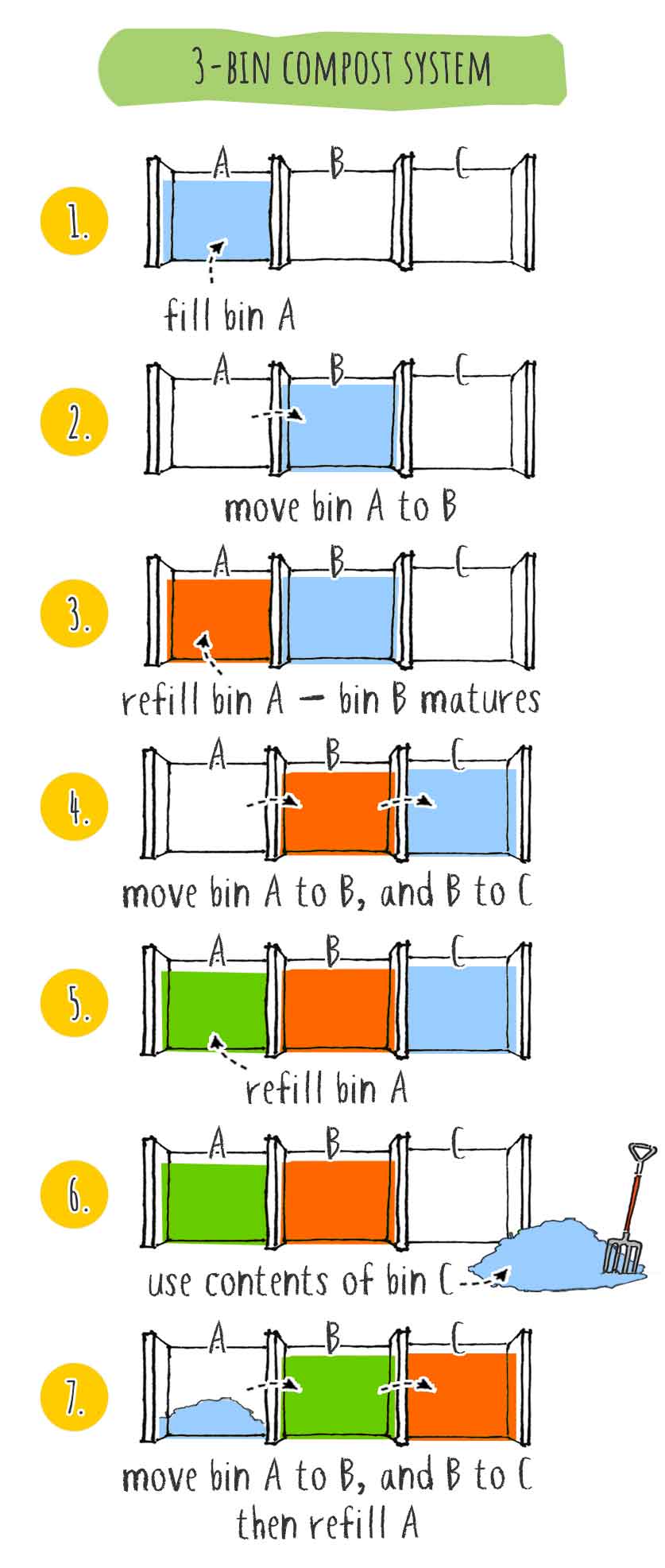
Where To Put A 3 Bin Compost Bin
A 3-bin compost structure needs lots of space. If you’ll be attempting hot composting, each bin must be at least a cubic yard in size. So, the first thing you should consider when looking for a place for your composting triplets is where they’ll fit!
I picked where to put my first compost bin pretty much at random. Where I initially thought was a super spot for a bin turned out to be a bad choice.
It was too far from my kitchen (so I often felt too lazy to make the trip there). It was too sunny (which made my compost keep drying out). And my hose couldn’t reach all the way there (so I needed to lug a watering can when my compost needed moistening. Which was often because of the sunny conditions).
Learn from my mistakes by scouting out the best place for your bins.
Here’s what to keep in mind when trying to find your 3-bin system’s perfect home – look for an area that:
- It is on level, well-drained ground (not on paving or another hard surface).
- It gets some sunlight but isn’t in direct sunlight all day.
- It’s protected from the wind.
- Close to a water source (or somewhere a hose can reach).
- It isn’t under a tree or large shrub.
- You can get there easily (if possible, find a spot that’s also wheelbarrow-friendly).
- It’s near to where you’ll use your compost most.
You might also want to position your bins at least 10 feet away from your home just in case your compost produces smells (it shouldn’t if you keep an eye on it) or attracts insect and animal pests.
Should You Go For a 2 Or 3-Bin Compost System
Suppose you don’t make that much waste, and you’re not happy to give so much garden space to compost bins. In this case, you can cut 1 bin from your 3-bin system and get double-bin benefits.
Here’s some inspiration for how to use your 2-bin system:
- Fill 1 bin, then leave the contents to mature while you fill the other bin.
- Move the contents from 1 bin to the other for thorough turning.
- Fill 1 bin with your usual organic waste, and store dry leaves or other brown waste in the other. You’ll likely love this idea if you make tons of green waste (think: fruit and veg scraps) and want a constant supply of brown waste (the dry leaves) to balance them.
- Fill 1 bin with your organic waste, and store finished compost in the other.
Ta da!



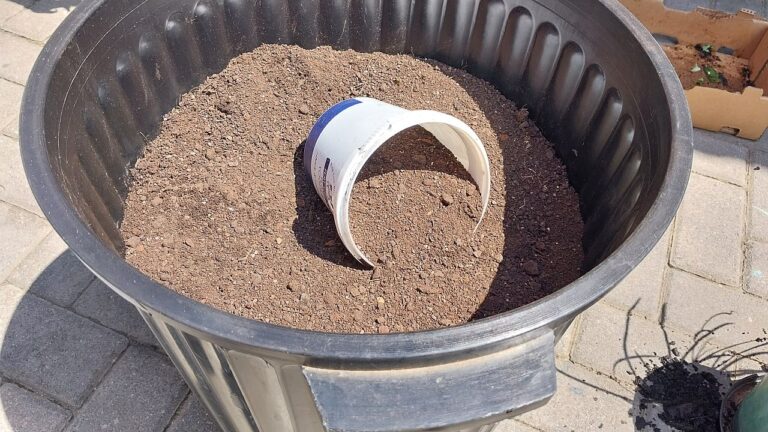
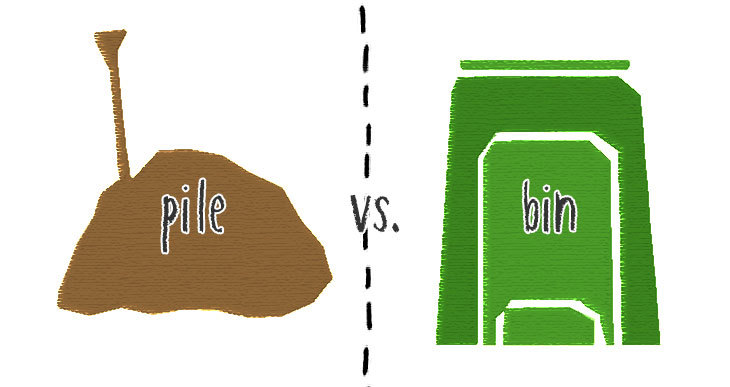
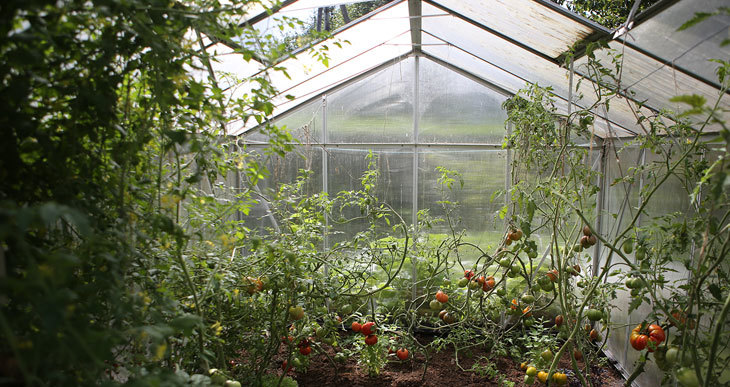
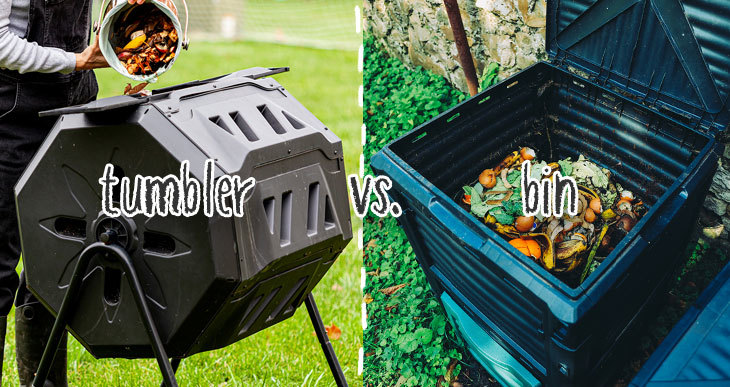

Excellent breakdown of what is required step-by-step. Details are easily followed.
Like the mistake section make you realise how hard to use the bins with little fuss.
Cheers
Thanks Gary
Glad you found it useful 🙂
Thanks for the very informative article on bin composting. It made me think again about placing it in a sunny location that gets direct sun exposure from the south and west during the summer. It sounds like this might be too hot for the composting process. Does the bin need much sun exposure at all to compost?
I could place it under a couple of Doug Firs that have been limbed twenty feet above and did plan to cover bins to protect from NW rains.
I was also wondering if there is a site to obtain schematic plans that you would recommend.Thanks again.
Hi Kevin
While some sun is great for warmth, too much can make things too hot. Placing your bin under those Doug Firs sounds good – they’ll provide shade while still letting in some sunlight.
And covering the bins is a smart move! Check out this article for more insights on composting and sunlight.
(I would suggest doing a quick online search for the schematic plans…)
Happy composting!